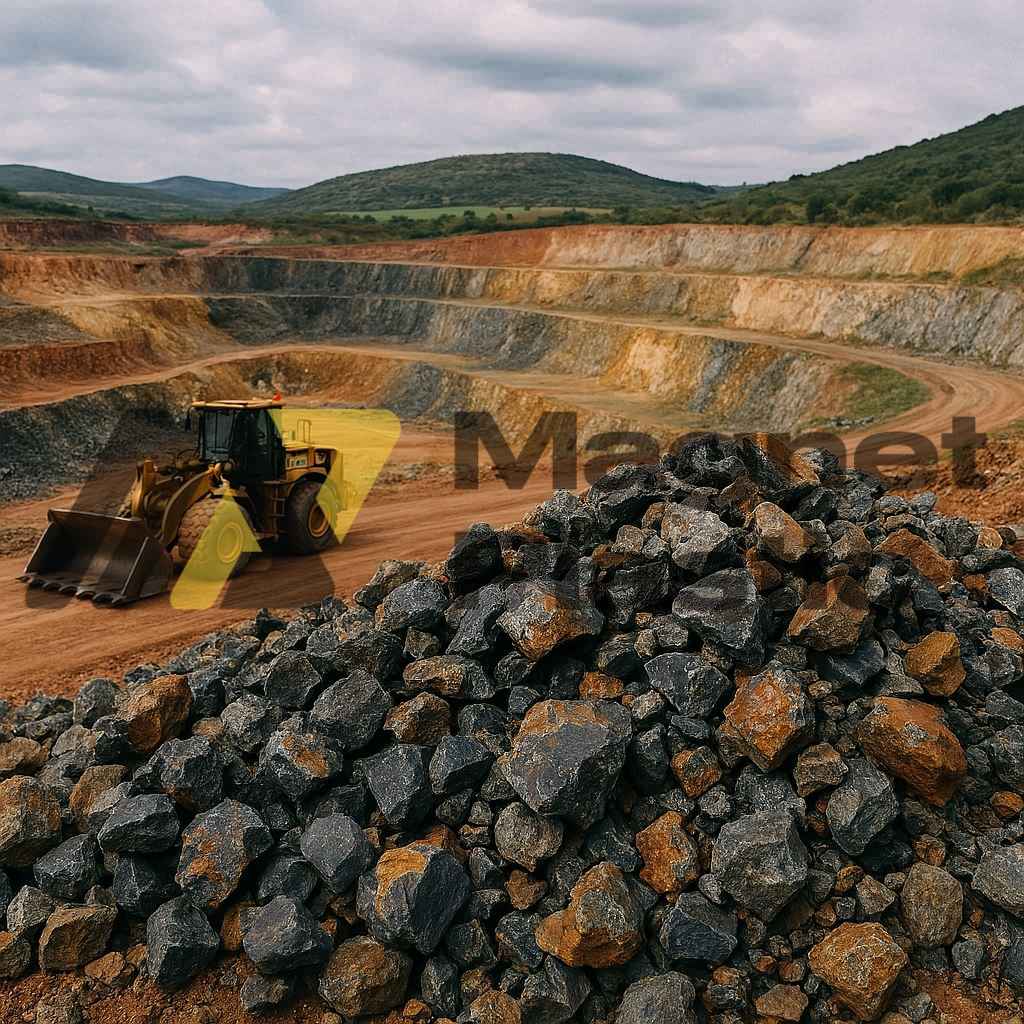Rare Earths in Spain: The Ciudad Real Deposit
The extraction of rare earths has become a strategic issue for the global economy. These minerals — essential for manufacturing electronic components, wind turbines, electric cars, and telecommunications equipment — are the foundation of much of modern technology and renewable energy. While the United States and Ukraine negotiate economic agreements related to their supply, the discovery of a high-potential deposit in Ciudad Real has gained prominence in Spain.
A Strategic Deposit for Europe
The deposit is located in the Campo de Montiel region, a historic and natural area that spans municipalities in the southeast of Ciudad Real and part of Albacete. Here lies a significant deposit of monazite, a mineral rich in cerium, neodymium, and lanthanum — critical elements for producing permanent magnets and batteries.
Estimates suggest that its exploitation could yield 2,100 tons annually, enough to meet 33% of Europe’s demand for these materials. According to the European Commission, tapping into this resource would reduce dependence on external suppliers, particularly China, which accounts for more than 80% of global production. In addition, the activity would create jobs and boost the local economy through the installation of related industries.
Environmental Risks and Social Opposition
Despite its economic appeal, the project faces strong opposition. The extraction and processing of rare earths carry significant environmental risks, including:
- Water consumption: Between 310,000 and 500,000 cubic meters per year would be required, in an area where aquifers are already overexploited and droughts are recurrent.
- Impact on biodiversity: The site overlaps with two Special Protection Areas for Birds and the habitat of the Iberian lynx, a critically endangered species.
- Waste and pollution: Although the new project claims it will not use hazardous chemicals, the risk of waste generation remains a concern.
In 2017, pressure from groups such as Ecologistas en Acción and the Sí a la Tierra Viva platform led the Castilla-La Mancha regional government to halt a similar plan.
The New Approach
The current proposal states that responsible mining techniques will be applied. Key measures announced include:
- Removal and later restoration of the topsoil.
- Monazite separation without polluting chemicals.
- Sector-by-sector exploitation to minimize impacts on agriculture.
Promoters emphasize that the estimated output could produce 350,000 electric cars or 10,000 wind turbines, contributing to the decarbonization of the European economy.
Alternatives and an Uncertain Future
Opponents advocate alternatives such as reopening abandoned mines and recovering rare earths from mining waste heaps, which may contain substantial quantities of these materials. They argue this approach would reduce the impact on environmentally sensitive areas.
Meanwhile, the European Union’s strategic interest in these minerals continues to grow. Brussels considers them critical to ensuring the continent’s industrial autonomy, a factor that could influence future decisions about the Ciudad Real deposit.
The debate therefore remains open: should priority be given to exploiting strategic resources to accelerate the energy transition, or to preserving a natural environment of high ecological value? The answer will shape not only the future of Campo de Montiel but also Spain’s role in Europe’s rare earth supply chain.
